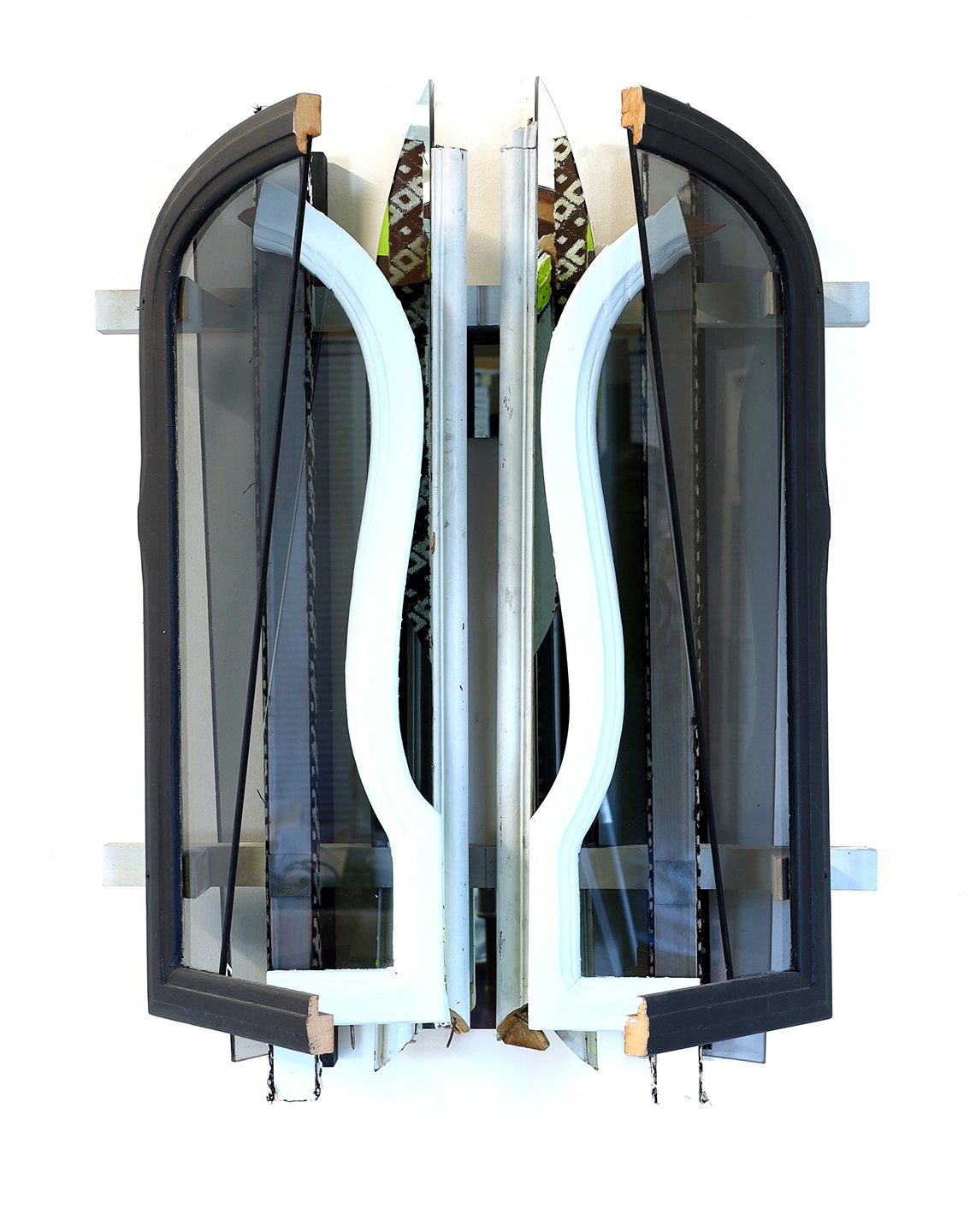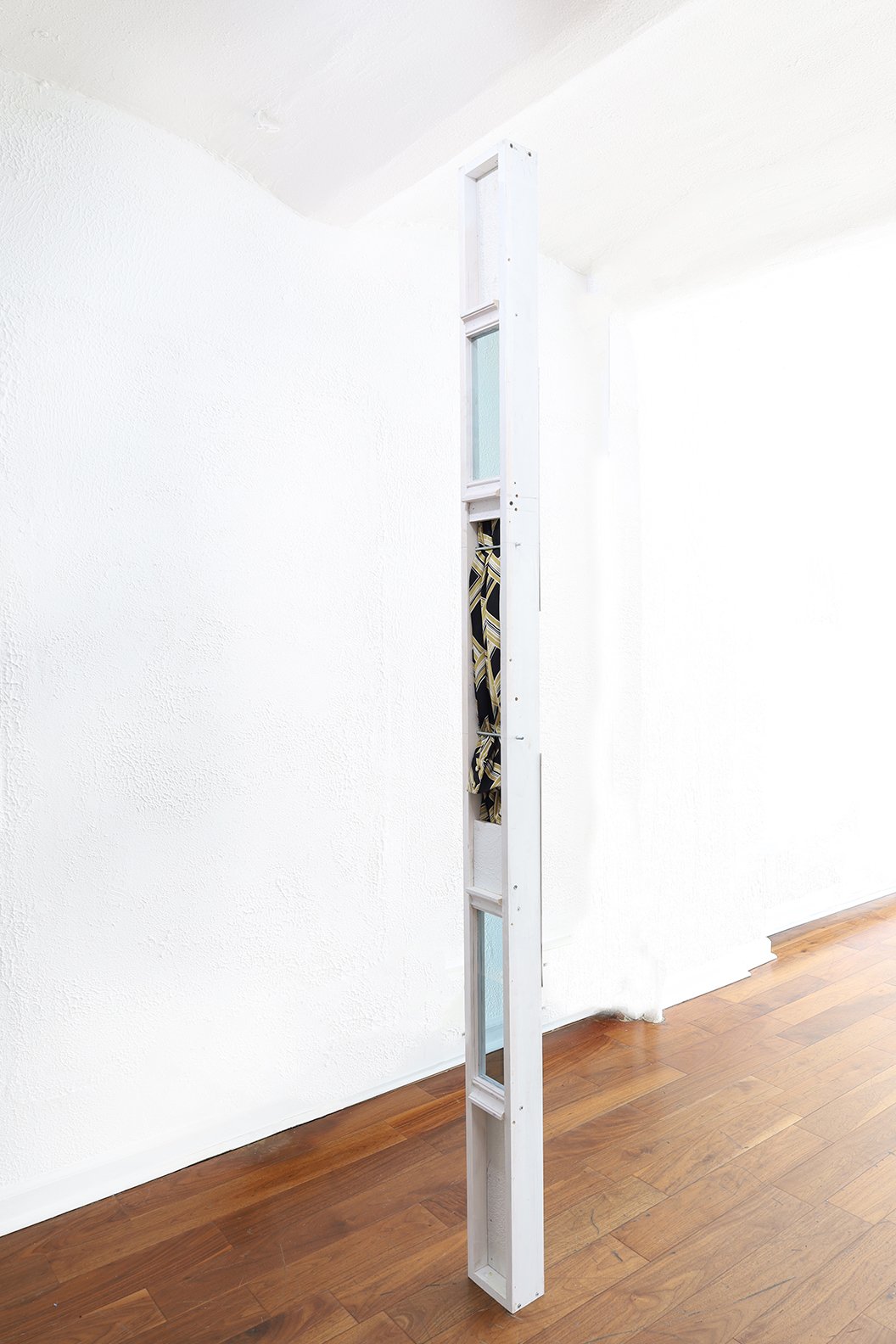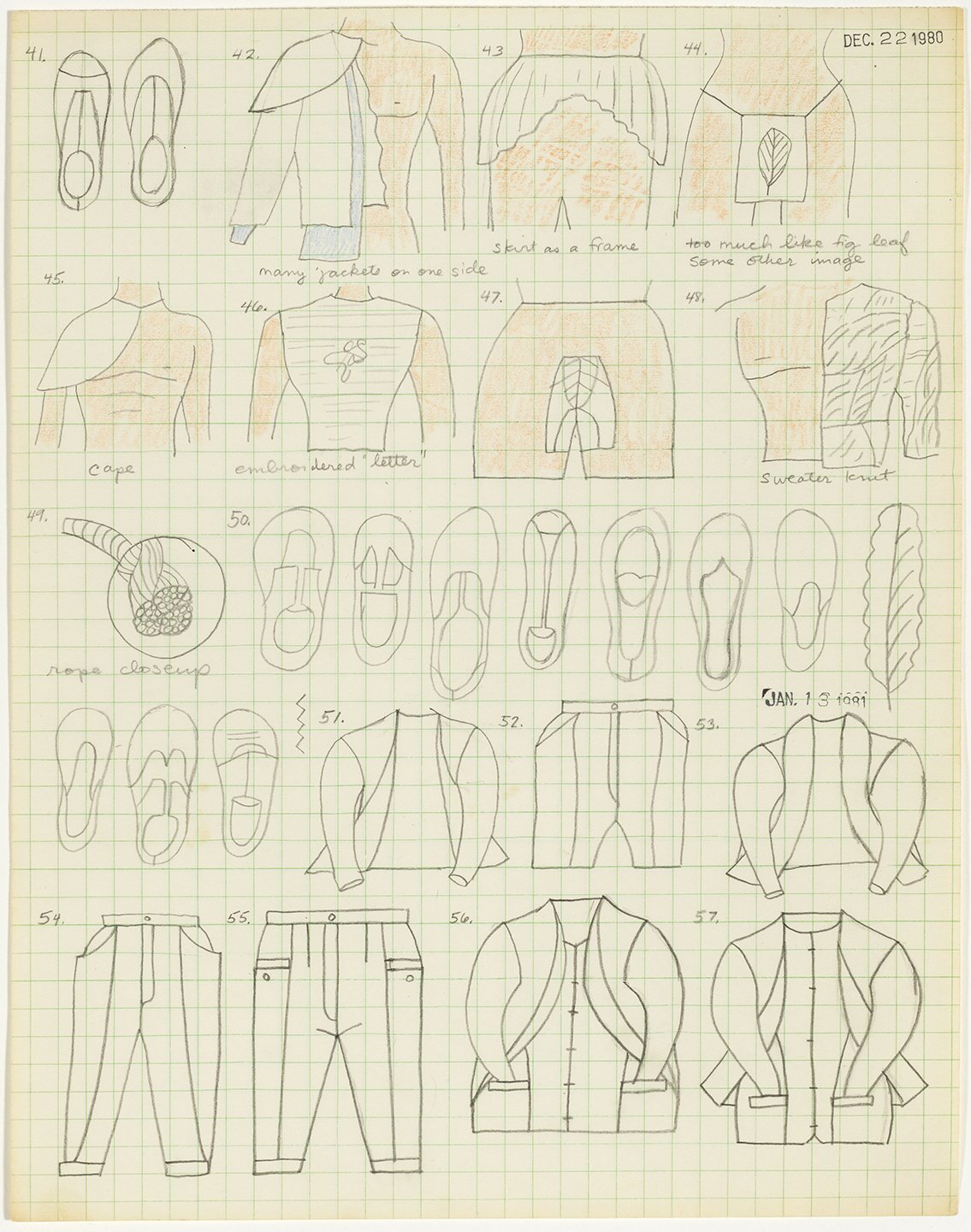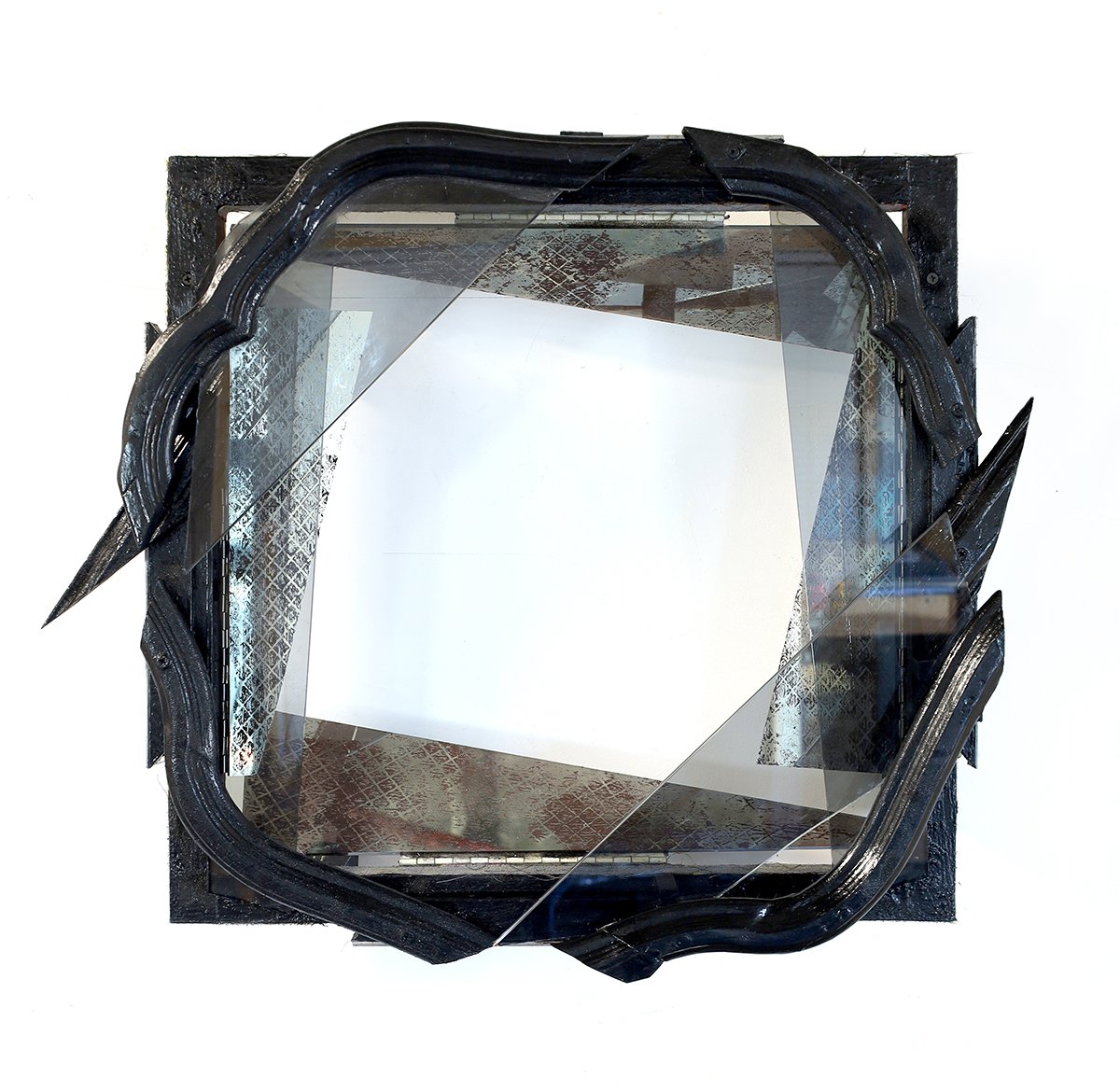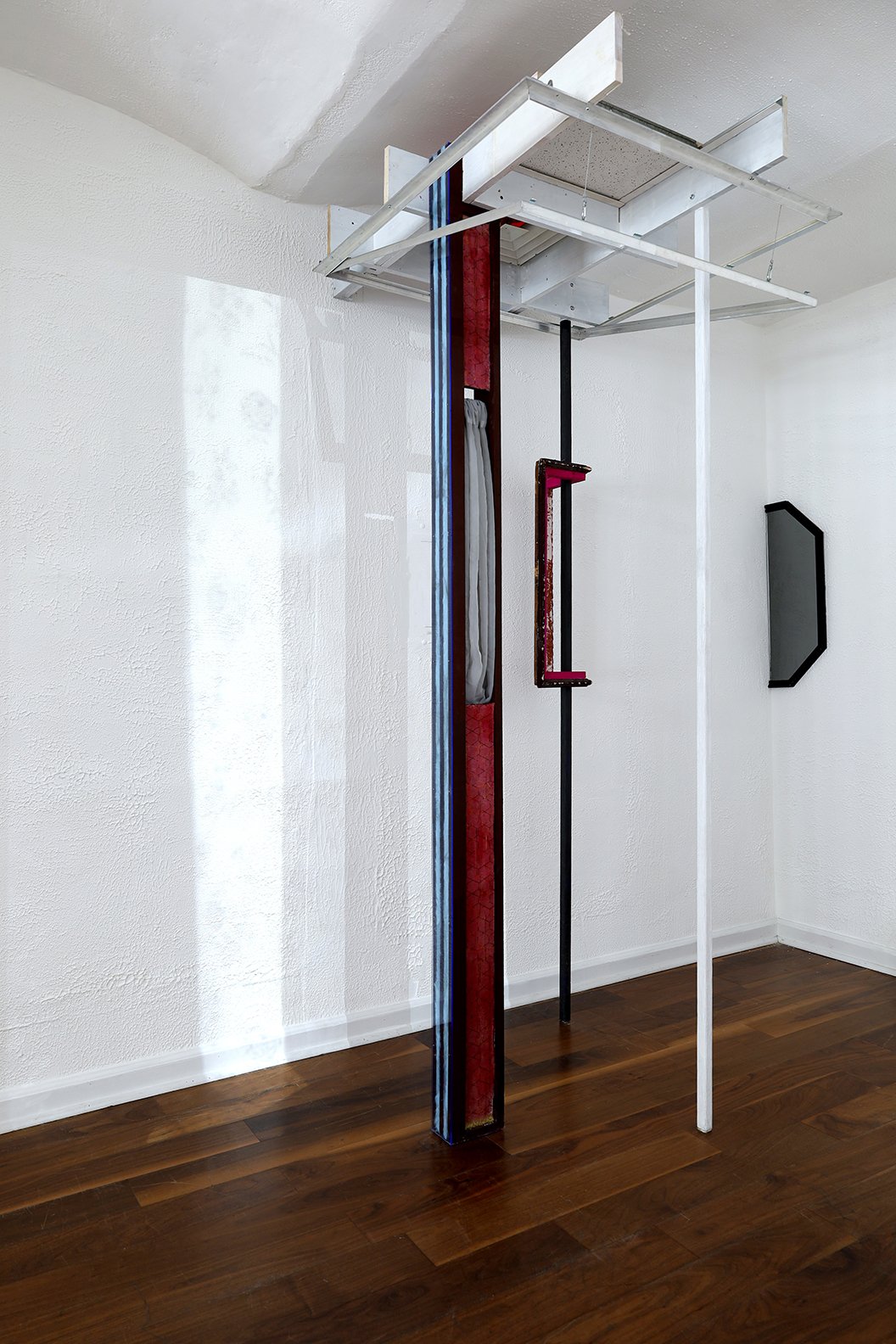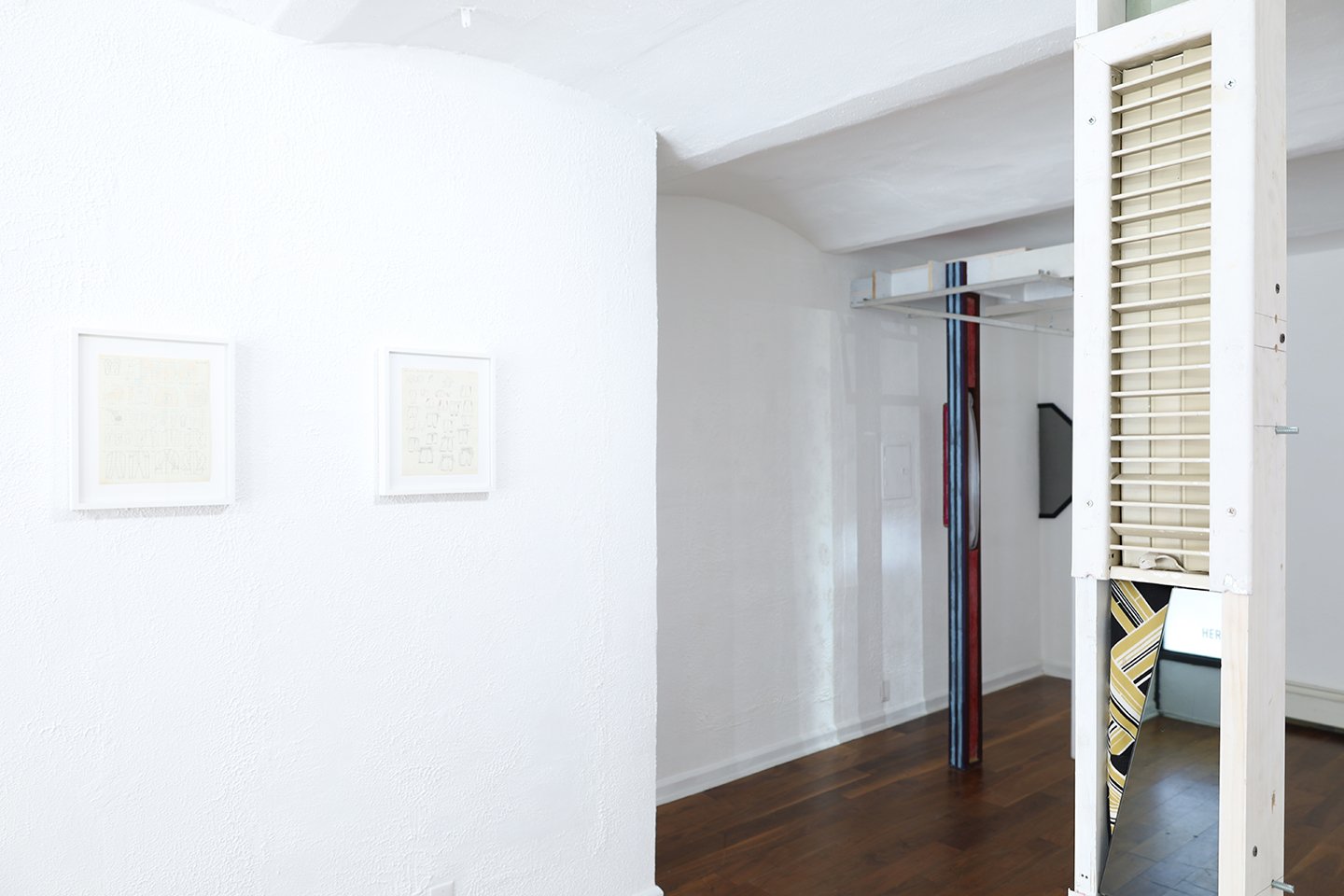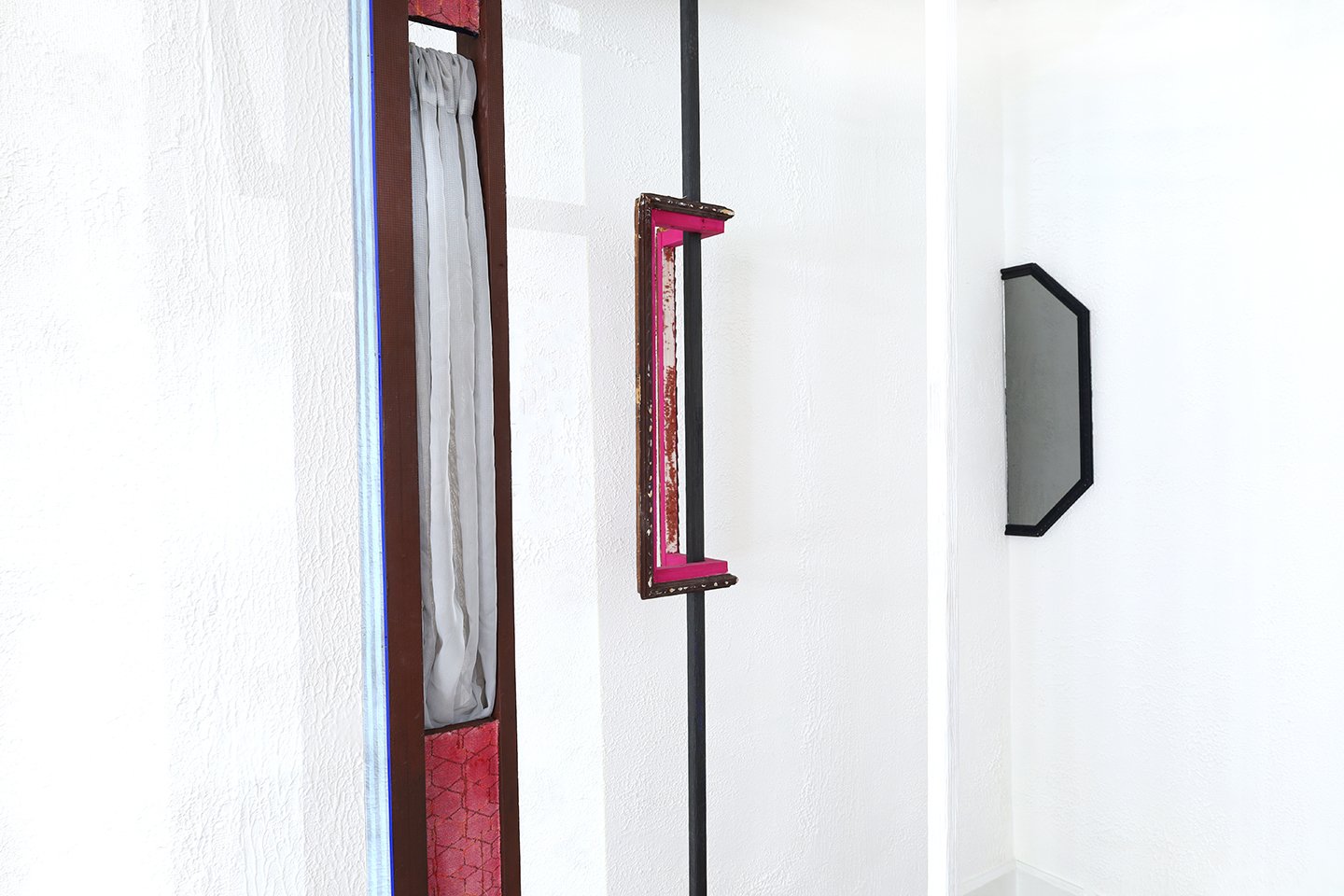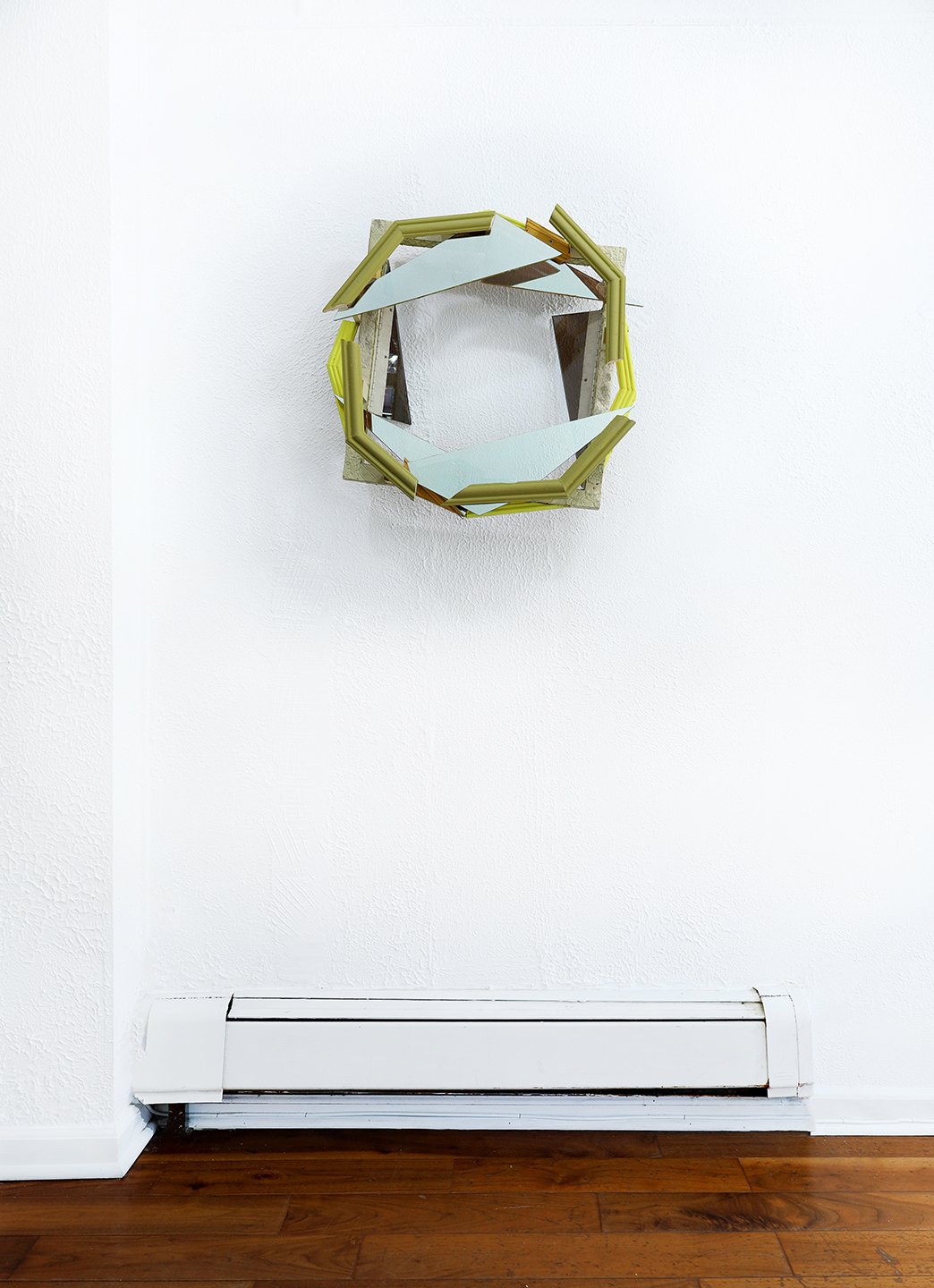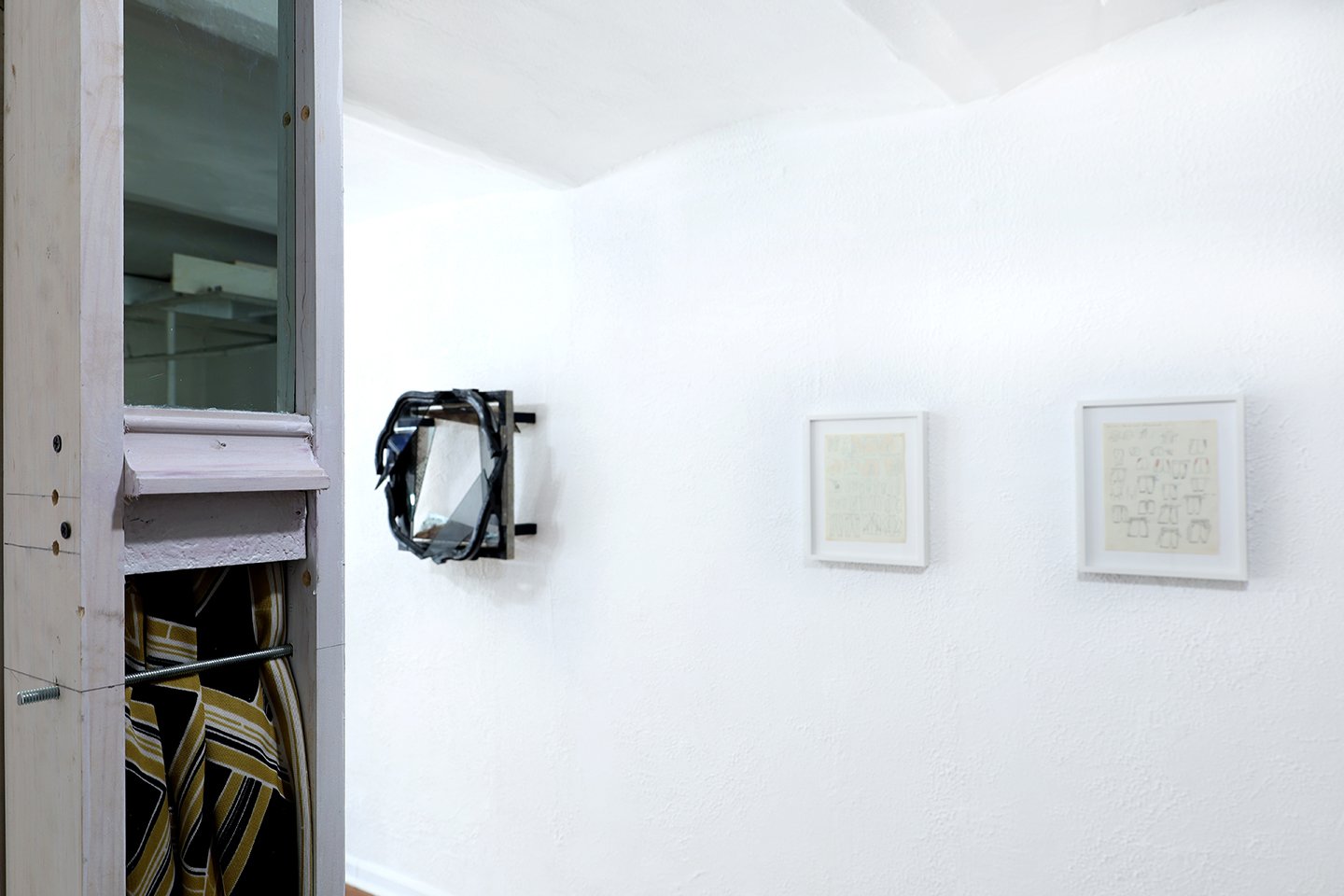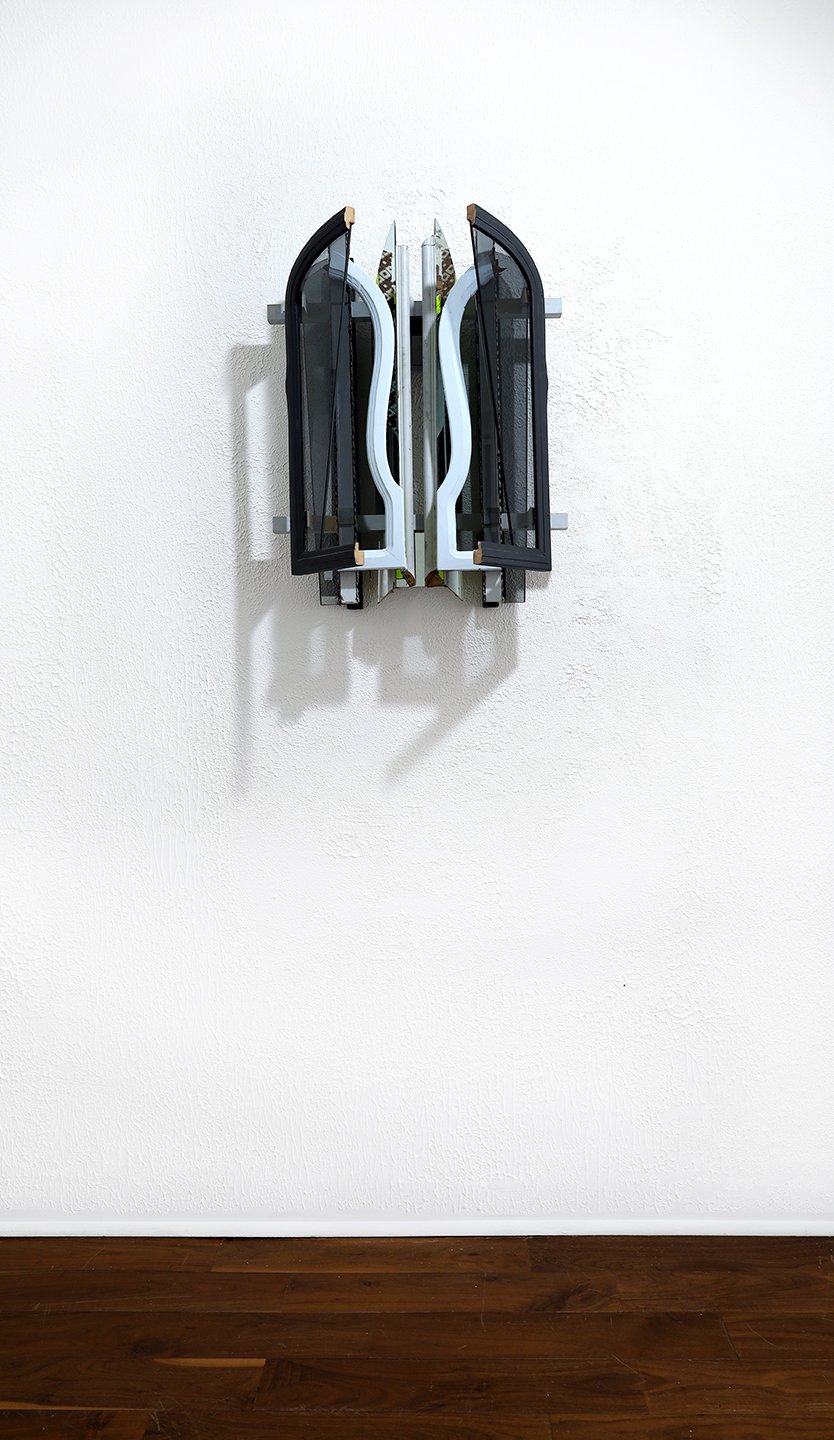Heather Rowe: Christina Ramberg
April 28th – June 11th, 2022
opening April 28th, 5-8pm
Artworks
Press Release
Heroes Gallery is pleased to present work by contemporary artist Heather Rowe in conversation with Christina Ramberg (1946-1995). Both artists explore formal fragmentation of the body and subvert our sometimes-hostile cultural framing of femininity.
Heather Rowe’s practice lives at the intersection of sculpture, architecture and film. Like an architect, she is building containers and frames for surrounding, protecting and controlling our bodies in space. Her fragmented constructions produce all the formal experiences of architecture; the familiarity of both salvaged and bought building materials, the physical references of a window, door and room, but we detect something threatening and destabilizing in our physical response to her works. With the many layered material slices and structural configurations, the space shifts and the room folds into itself as if being sucked into a black hole. Rowe’s sculptures become liminal spaces themselves, transition points between locations or states of being. In an architectural sense, they are the threshold.
Rowe is also interested in cinematic thresholds and has cited films about hauntings, specifically ones about women being tormented by a paranormal presence, as an influence in prior work. These stories often illustrate the slippage between victim vs. heroine, truth vs. fiction and feminine vs. masculine. Through mirrors and repetition, Rowe uses a sort of spatial stutter to recreate a spectral presence, forcing the sensation of dematerialization in her viewers and casting doubt onto what they think they know about space they are standing in. Similar to the experience of watching any good horror film, the viewer becomes the performer, the observed, and the voyeur simultaneously.
Christina Ramberg’s repetitive drawings of undergarments illustrate the female form in a constant state of modularity and mutation. The obsessive repetition of the drawings and the investigation into the undergarment’s intent to structurally correct the female form hybridizes our bodies with architecture. The drawings show the female body as building blocks or raw material and Ramberg takes obvious pleasure in dissecting the garments that bind, tuck and lift women’s bodies into ‘perfect’ standardized shapes. Her work is a conversation between the macabre fetishization of this corrective binding (the restraining of untamed bodies) and the power of constructing gender, sexuality and identity.
Both artists examine the mutability of the feminine form and the power that is both given and taken away through the process of dissolving and materializing. Their work is based on the belief that bodies conform, resist or succumb to their surroundings but the process, often interwoven with desire, creates a protective force.
Heather Rowe has a BA from Massachusetts College of Art and received her MFA from Columbia University. She has exhibited in numerous institutions and galleries including PS1/MoMA, NY; the Indianapolis Museum of Art, IN; the Contemporary Arts Center, OH; UMMA/University of Michigan Museum of Art, MI; Galerie Zink, Berlin, Germany; D'Amelio Terras, NY; Michael Benevento Gallery, CA; Ballroom Marfa, TX; Andrea Rosen, NY; White Columns, NY; and Artists Space, NY. In 2008, her work was featured in the Whitney Biennial. In the past decade Rowe has exhibited extensively, including; Socrates Sculpture Park, NY; solo exhibitions at James Cohan Gallery, NY, and Lucien Terras, NY; and installations at Diverse Works, TX and Providence College Galleries, RI.
Her work has been featured in numerous publications such as: Artforum, Modern Painters, the New York Times, Art in America, The New Yorker, Flash Art, and Art Review. Adjunct, full, and part-time teaching posts have included: Harvard University (Department of Visual and Environmental Studies), Yale University and Cooper Union. She is currently Associate Professor and Graduate Program Director in the Sculpture Department at the Rhode Island School of Design.
Install Views
Christina Ramberg, c. 1970. Photo by William H. Bengston, courtesy of the Estate of Christina Ramberg and Corbett vs. Dempsey, Chicago.
“I remember sitting in my mother’s room watching her get dressed for public appearances... and I remember being stunned how her [undergarment] transformed her body, how it pushed up her breasts and slendered down her waist... Watching my mother get dressed I used to think that this is what men want women to look like, she’s transforming herself into the kind of body men want. I thought it was fascinating... in some ways, I thought it was awful.”
Porter, J. (2014), Some Approaches for Exploring Collected Material, Christina Ramberg Catalogue, Boston: ICA Boston, p 47.
Christina Ramberg (1946-1995) was born in Fort Campbell, KY and moved often in childhood due to an army colonel father, living briefly in Germany, Japan, Kansas, Virginia and finally settling in Chicago, Illinois. She attended the Art Institute of Chicago, receiving her BA in 1968 and her MFA in 1973.
Her ties to the Art Institute continued throughout her life. Having studied under Ray Yoshida, a mentor to the Chicago Imagists group, Ramberg met and married group member and fellow student Philip Hanson in 1968. After graduation both artists taught in the school’s painting and drawing department for several years with Ramberg later becoming Department Chair. She’s often associated in her early career with the Chicago Imagist and the “Hairy Who” group due to proximity, aspects of Surreal content in her work and her stylistic references to cartoons/comic books, but her unique vision and disinterest in visual/verbal puns set her apart. She is, as Lynne Cooke described in her 2018 National Gallery of Art exhibition, a true outlier.
In 1974 Ramberg held her first solo exhibition at the Phyllis Kind Gallery in Chicago, igniting a singular though tragically short career.
Women’s heads, hands, urns and corsets crowd Ramberg’s controlled, ultra-flat surfaces. Her gaze is one of fetishistic fascination sandwiched between macabre pleasure. Experiments in bodily distortion, binding and fragmentation build her torsos into strange wire and wood armatures, causally hung with quilts of assorted patterns and textures. Slick, coiffed hair and tightened, structural undergarments impose a brutal poise; everything from the elegant curl of a wrist to the devotionally detailed lace on a panty line must be “just so.” Her work dives into the nature of objectification in both of its definitions; to degrade a person to the status of object and to express the abstract in a concrete form.
In order to achieve this careful balance of definitions, Ramberg perpetually constructs binaries. The cultural gender binary is underlined, cut apart, tied up and intensified into a hypnotic Frankenstein. There, poking like hair between bandages, is the often-clichéd ‘double-bind’ of femininity and in turn, the feminist critique. Bodies are assembled from Léger-like volumetric forms but similarly restrained with flat patterns in somber colors. This duality gives her work the same grisly fascination as horror films, a genre that relies completely on a binary where fear serves as a source of both pleasure and curiosity.
Ramberg has been included in numerous solo and group exhibitions, including at The Institute of Contemporary Art (ICA), Boston, MA; KW Institute of Contemporary Art, Berlin, Germany; National Gallery of Art, Washington D.C.; Whitney Museum of American Art, New York, NY; and the Museum of Contemporary Art, Chicago, IL. Collections include the Art Institute of Chicago, the Smithsonian American Art Museum, Washington D.C.; Museum Moderner Kunst, Vienna; Museum of Modern Art, New York; and the Whitney Museum of American Art, NY.
Christina Ramberg died in 1995 in Chicago, Illinois from a debilitating neurodegenerative disease. She was forty-nine years old.


